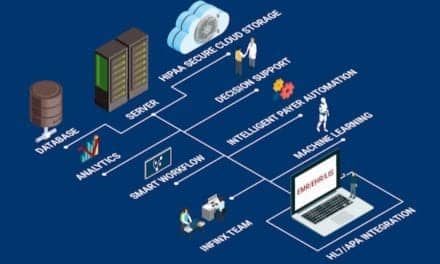By uniting behind thoughtful modernization of the current regulatory structure, the diagnostics community can ensure continued innovation, improved care, and a more efficient healthcare system.
By Lâle White
Summary:
A recent court ruling excluding laboratory-developed tests (LDTs) from FDA regulation highlights the urgent need for the diagnostics industry to modernize oversight through a collaborative, CLIA-based framework that balances innovation, safety, and accessibility.
Takeaways:
- CLIA Framework Needs Updating: Modernizing the CLIA oversight system is essential to keep pace with technological advances in diagnostic testing, and this can begin with industry-led initiatives.
- Industry Leadership Is Key: Associations and labs must collaborate to share best practices and guide policy refinements through established advisory channels like CLIAC.
- Balanced Oversight Encourages Innovation: A streamlined, non-duplicative regulatory model supports innovation, ensures patient safety, and maintains public trust in diagnostic testing.
The recent court ruling vacating the Food and Drug Administration (FDA)’s attempt to regulate laboratory-developed tests (LDTs) marks a pivotal moment for the diagnostics sector. While the ruling affirms that LDTs are not medical devices under the Federal Food, Drug, and Cosmetic Act (FDCA) and fall under the regulatory purview of CMS through CLIA, the need to modernize oversight for this rapidly evolving sector remains.
So, what happens now? The court ruling has provided a prime opportunity to move forward on a practical and sustainable path—one that builds on the existing CLIA framework and supports innovation, safety, and access without overburdening laboratories.
CLIA Needs Modernization
There is no doubt that CLIA needs to be modernized to keep pace with the rapid advancements in test development, especially as emerging technologies continue to transform diagnostics. However, legislative solutions are often slow to materialize and can require multiple rounds of refinement before they adequately reflect the nuances of the industry. They should not be the first line of action. Instead, much of this evolution can be addressed today through thoughtful, industry-led initiatives that build on CLIA’s existing framework. The diagnostics community can lead the way by sharing best practices and identifying updates that better align with the complexity of modern laboratory testing.
Key industry associations—including ACLA, ADLM, AMP, NILA, and CAP—along with diagnostic companies, can shape oversight by developing and sharing internal lab quality protocols, contributing best practices, and providing input on what works in real-world settings. This collaborative approach ensures that oversight evolves in step with innovation and patient needs.
Refinements to CLIA policy can then be introduced and reviewed within the Clinical Laboratory Improvement Advisory Committee (CLIAC), the federal advisory body that guides CMS, FDA, and the CDC on changes to CLIA policy. Regulators and policymakers look to the industry for leadership and actionable recommendations, and so for recommendations that extend beyond CLIAC’s scope, the diagnostics industry can aid Congress in needed legislative refinements.
LDT Developers Need Better Oversight Model That Encourages Innovation
Diagnostic labs that develop tests to meet the current healthcare needs of their physician client bases need an oversight model that acknowledges the complexity of their medical services and supports that work by operating efficiently and without imposing duplicative, conflicting, or unproductive regulatory requirements that are costly and time-consuming, and unnecessarily stifle innovation.
More broadly, the diagnostics sector wants to ensure reasonable compliance costs for the immediate medical needs of patients in their market, allowing companies to plan strategically for the future. With a clear understanding of the oversight environment and process, laboratory developers can safeguard the path to continued innovation.
Importantly, patients must have confidence that the tests they rely on meet the highest standards for quality and safety. At the same time, they should have access to the latest diagnostics that empower timely and informed healthcare decisions.
A successful future for the diagnostics sector is within reach—if the industry takes the lead. By embracing this moment and uniting behind thoughtful modernization of the current regulatory structure, the diagnostics community can ensure continued innovation, improved care, and a healthcare system that works better for everyone.
Featured Image: Noipornpan | Dreamstime.com
ABOUT THE AUTHOR

Lâle White is CEO of XiFin.





